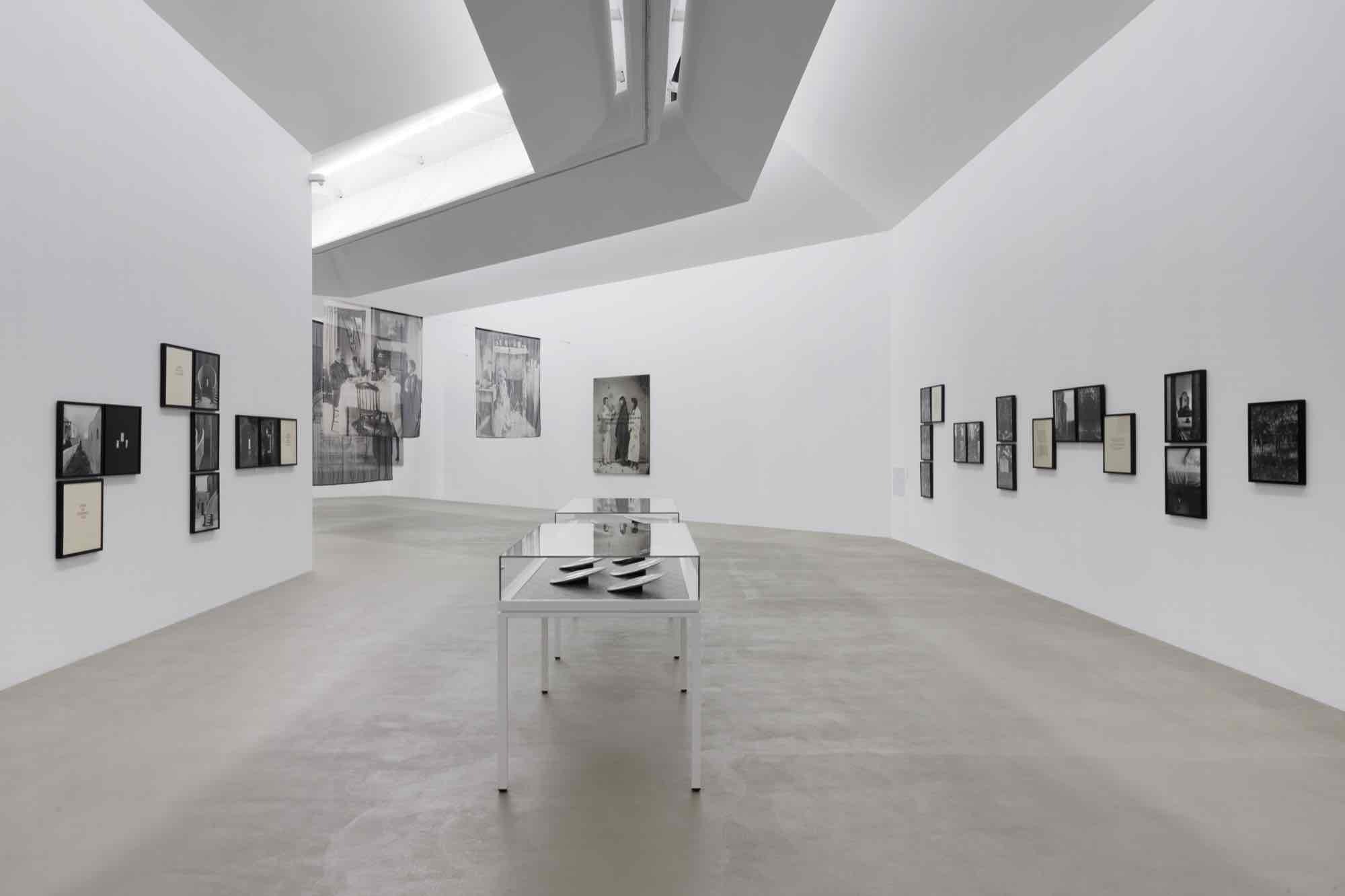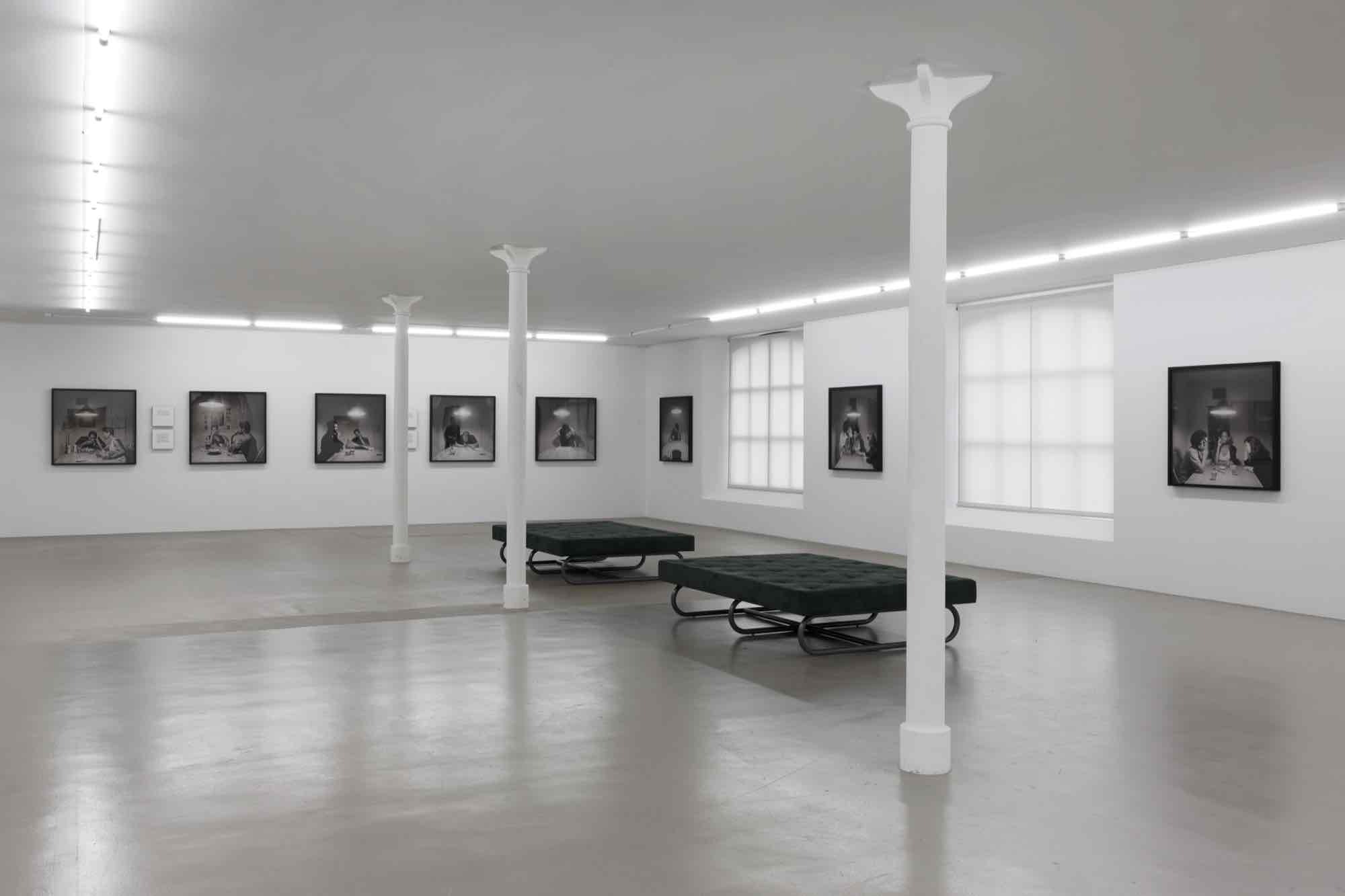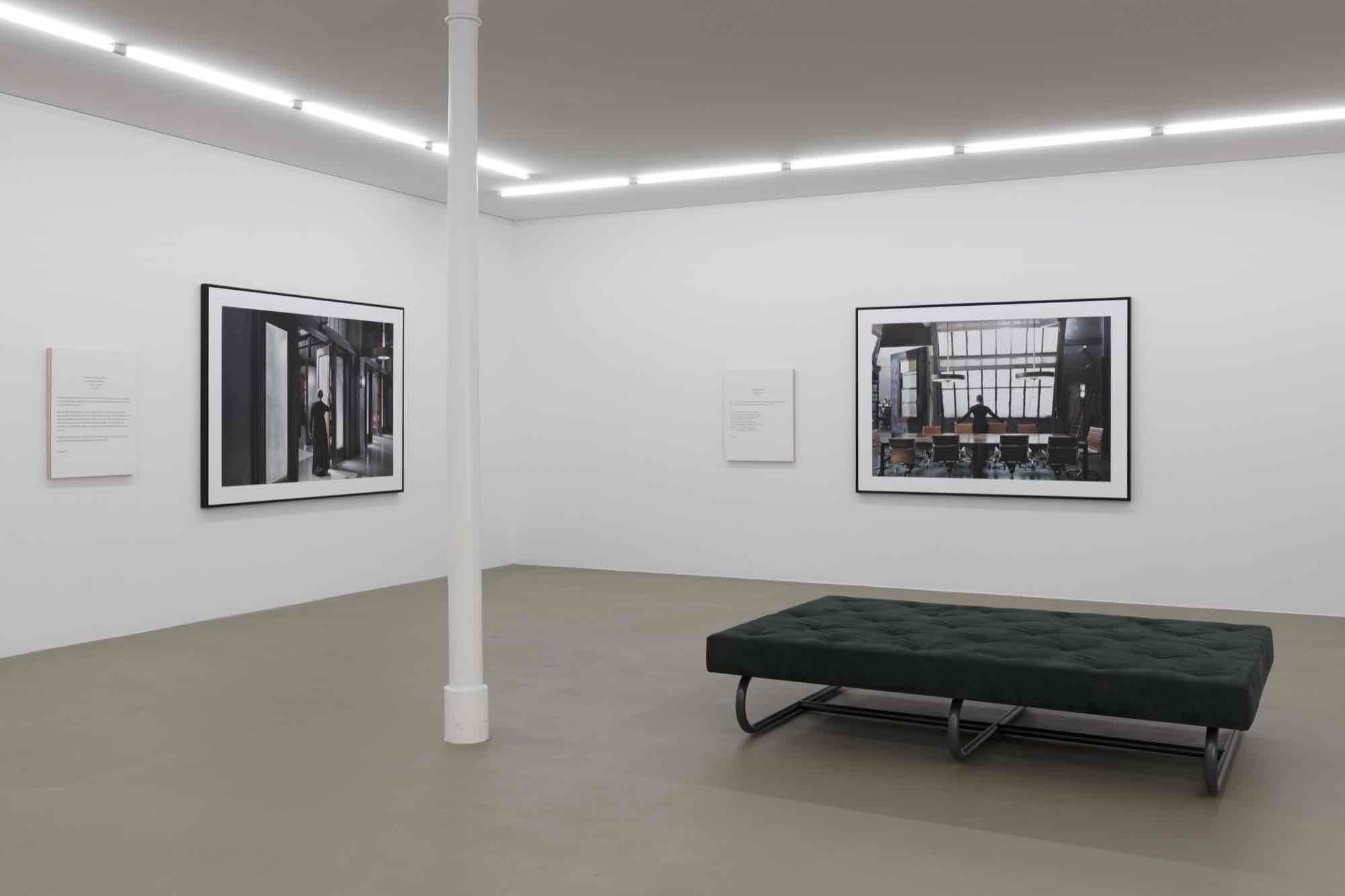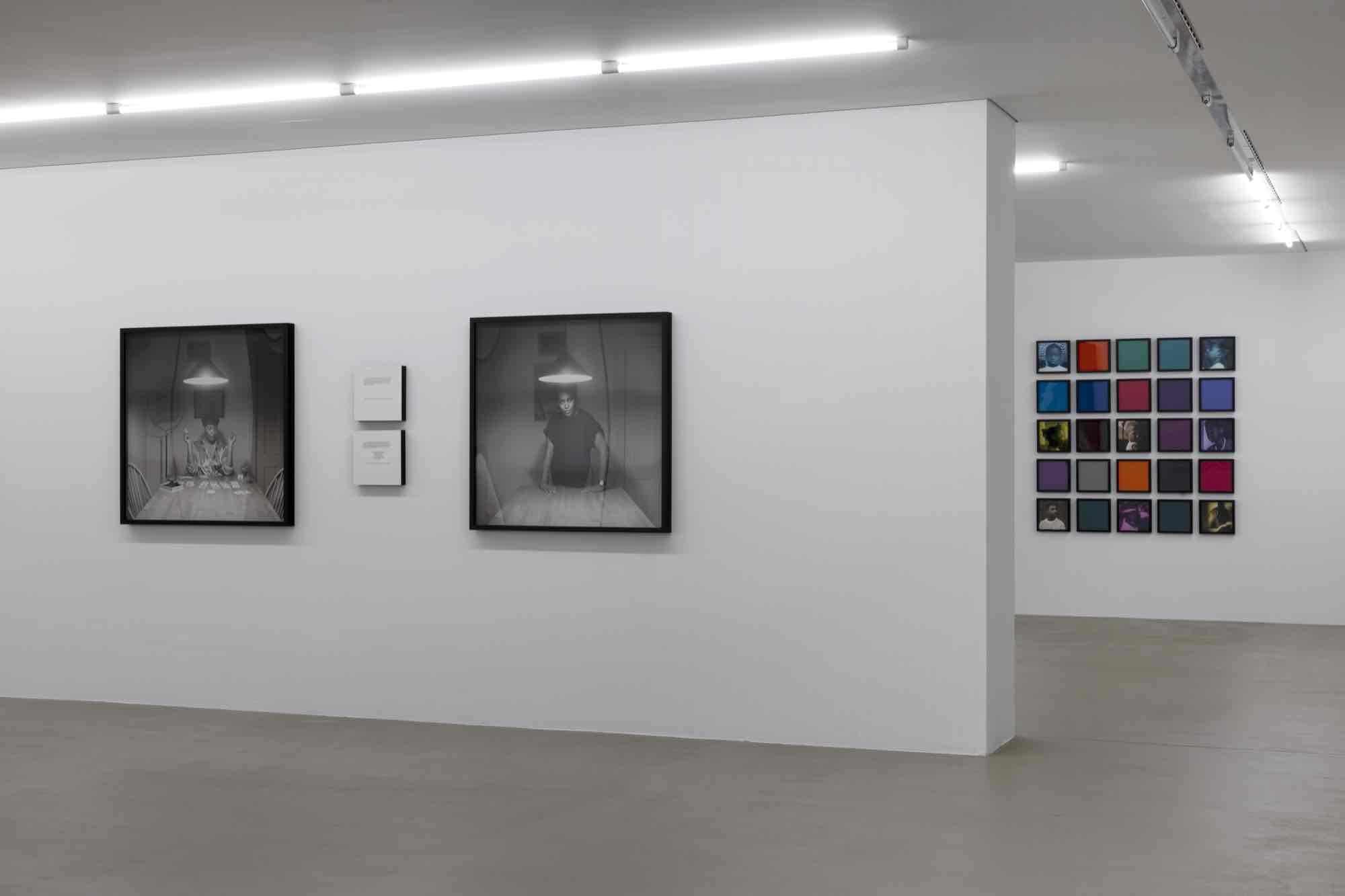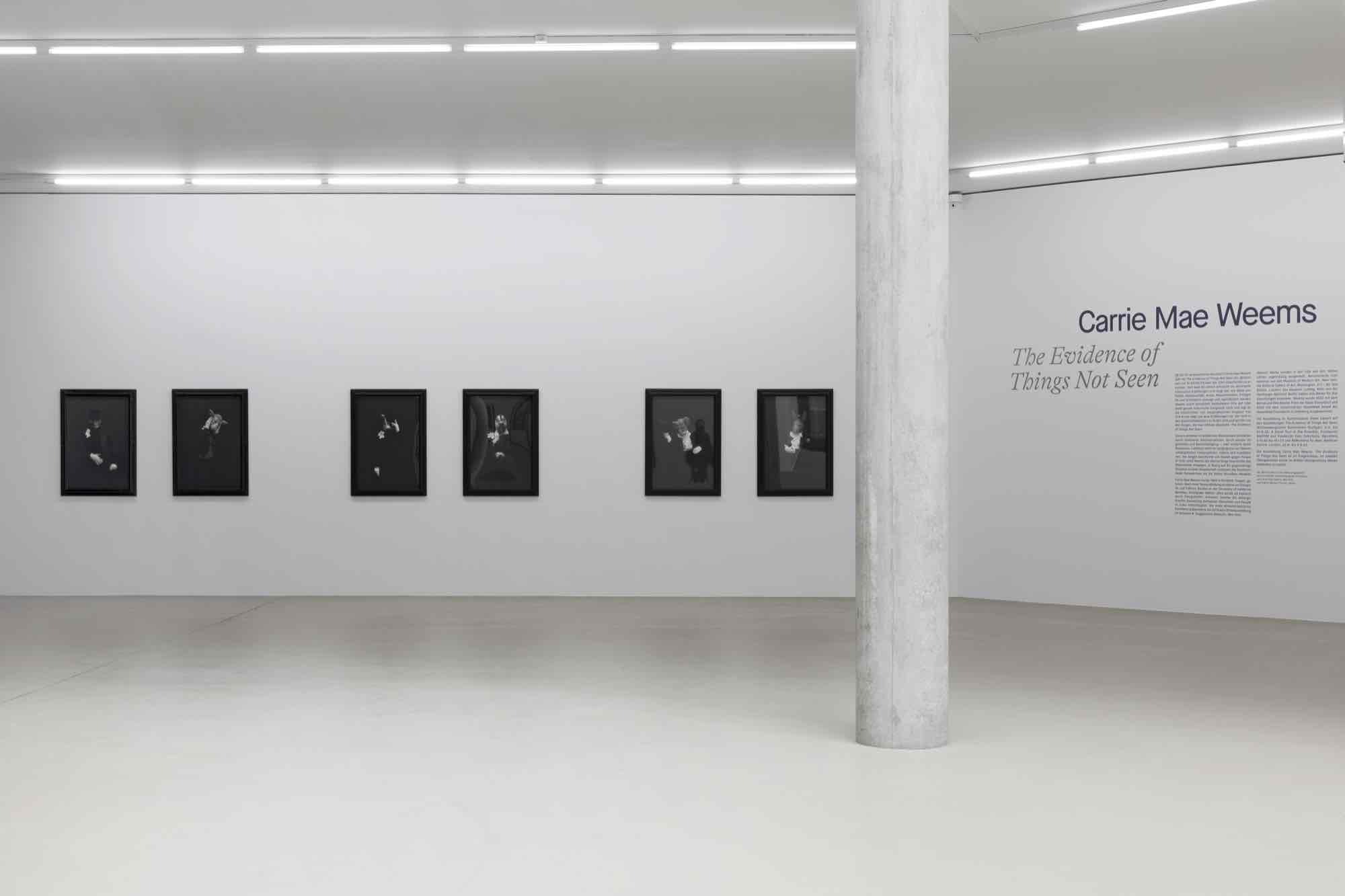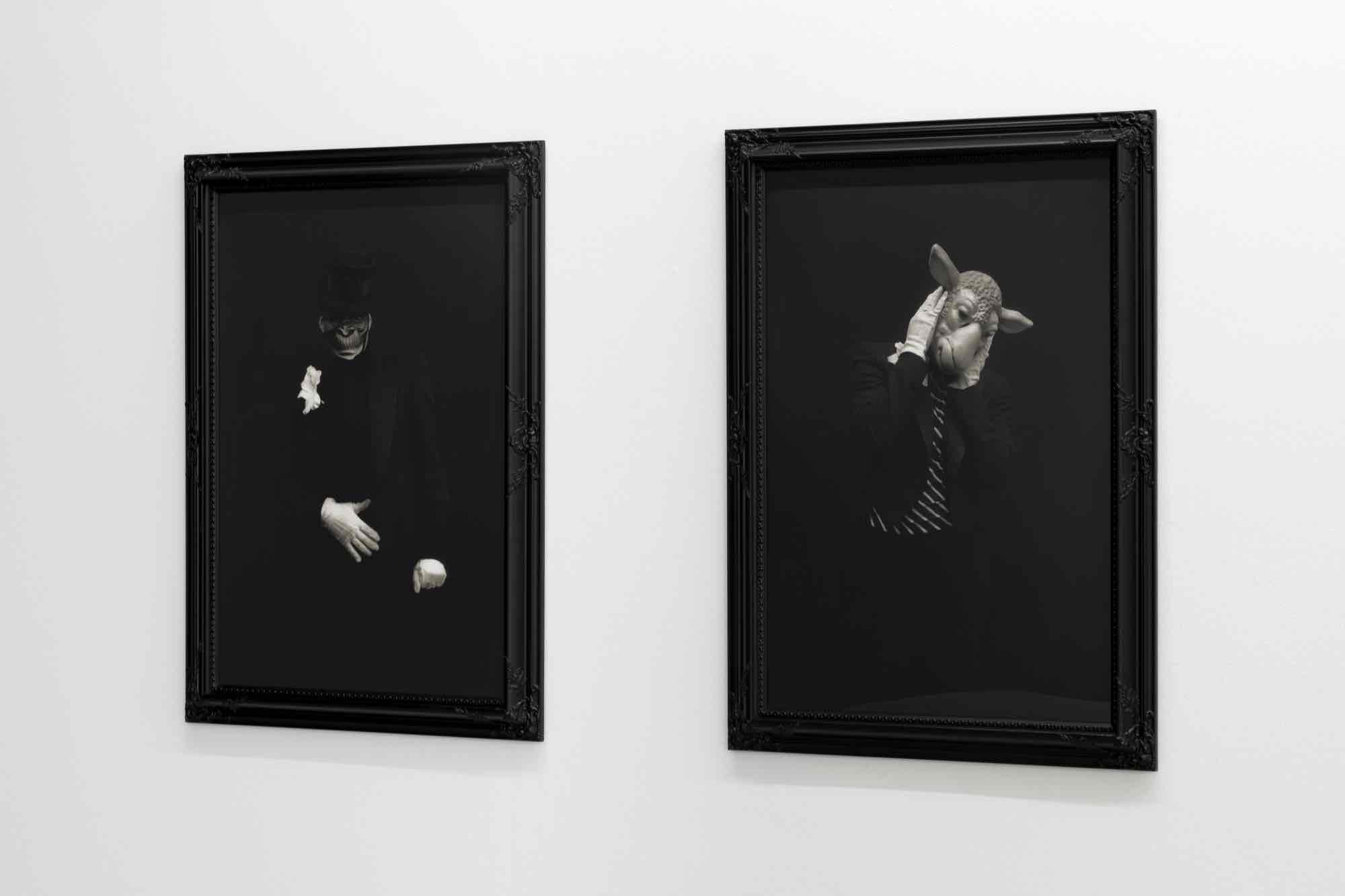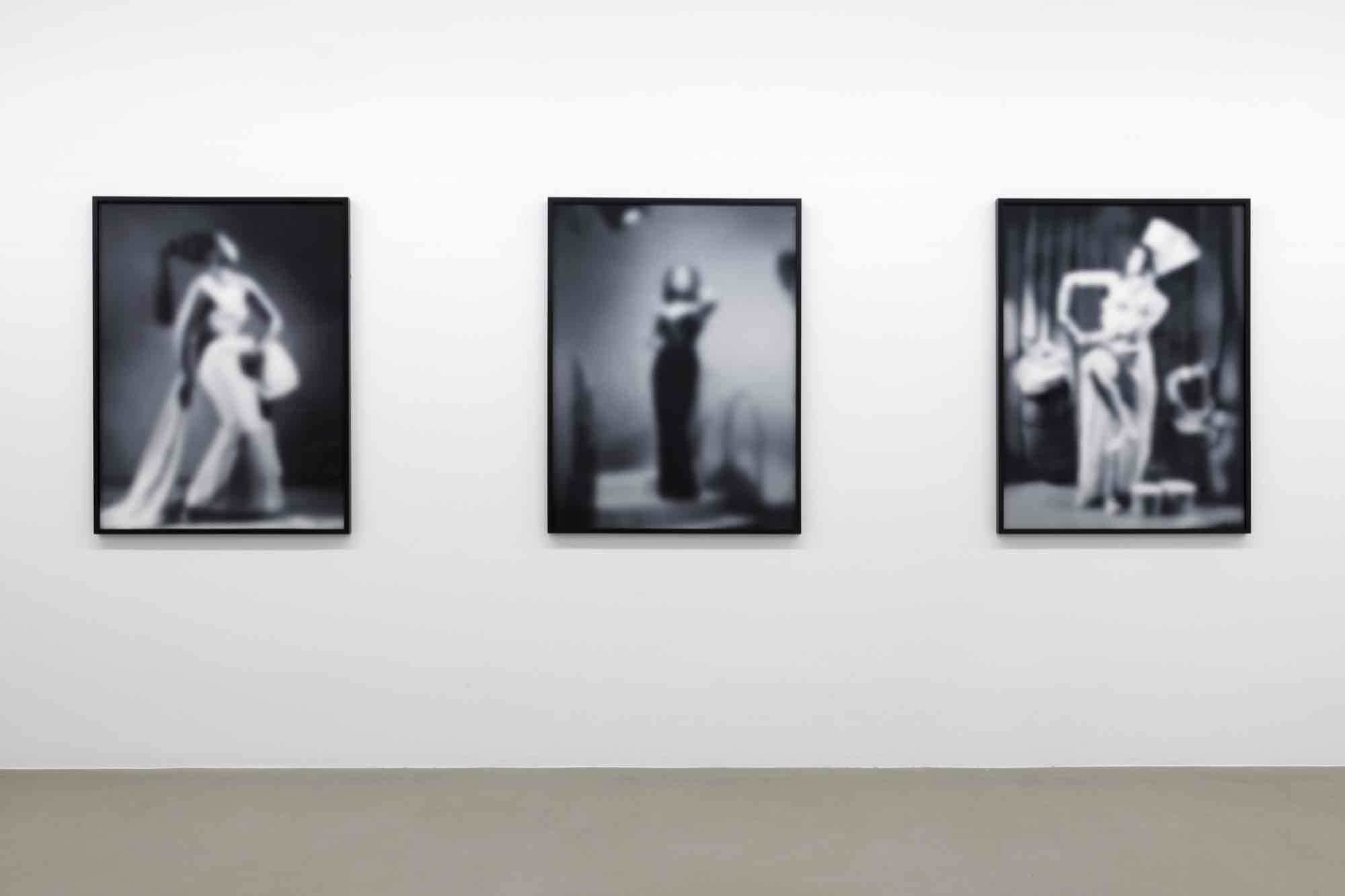Carrie Mae Weems
The Evidence of Things Not Seen
26 Oct 2023 - 07 Apr 2024
Kunstmuseum Basel presents The Evidence of Things Not Seen, a wide-ranging retrospective of the work of the American artist Carrie Mae Weems (b. Portland, Ore., 1953), who ranks among the most influential contemporary artists working today. Encompassing photographic series, videos, and installations made over the past thirtyfive years, her multifaceted oeuvre has had a far-reaching aesthetic and political impact.
In The Evidence of Things Not Seen, Carrie Mae Weems invites us to explore blind spots of (contemporary) history. The title of her first exhibition in Switzerland gestures toward the history of violence against Black and Indigenous people and the presence of what is disregarded or not shown. Weems appears in many of her own works, guiding us to forgotten moments in history—to formative events whose lingering effects are palpable in society even today. The artist investigates dominant historical narratives and reveals how they are produced and reproduced by politics, scholarship, art, mass media, photography, and architecture. Her presence as a witness enables Weems to be both subject and object, both director and performer of her works. Whether working at significant sites or restaging historic moments, her focus is always on how the histories of marginalized groups are framed. Racism and systems that support it in all its manifestations and excesses are a central concern in Weems’s work.
Weems’s work has often examined dominant power structures and forms of social segregation, in photographic installations such as The Hampton Project (2000), which explores white efforts to reeducate other cultures in the U.S., and Museum Series and Roaming (both 2006), which spotlight the exclusionary quality of cultural and historical monuments. A number of works address the police violence against African Americans in the U.S. To counterbalance the long history of brutality against people of color, Weems surveys the equally long and storied history of resistance. Motifs of escape, grief, remembrance, and protest become sensitive manifestoes against forgetting. And 22 Million Very Tired and Very Angry People (1989–90) combines images of everyday items with captions that suggest their potential uses as tools of revolution. The series can be read as a poetic instruction manual for collective rebellion against oppression.
In the installation Land of Broken Dreams: A Case Study (2021), visitors enter a retro living room filled with memorabilia related to the Black Panther Party, the militant Black power organization founded in 1966. Incorporating historic magazines and photographs that depict the racial violence of the 1960s and 70s, the piece resonates with contemporary issues. The repercussions of systemic racism are also illustrated by the façades in Painting the Town (2021), which have been boarded up and repainted, in some cases several times. The series was created in Weems’s native Portland, Ore., a center of the Black Lives Matter protests and the scene of heavy clashes between protesters and police.
Since the earliest days of her career, Weems has also drawn attention to beauty, rituals, magic, and spirituality as well as glimpses of private life that speak to public concerns. A characteristic example is The Kitchen Table Series (1990), already an iconic piece of Western photography and art history, which builds emotionally complex narratives centered on the life of a Black woman in the intimate setting of her kitchen. The exhibition in Basel dedicates an entire room to the photographic work.
Another sustained concern in Weems’s work is the ambivalence of popular culture. In The Louisiana Project: Missing Link (2003) and Lincoln, Lonnie, and Me—A Story in Five Parts (2012), she avails herself of the alluring stylistic devices of carnival and vaudeville, trying on traditional roles, masks, and costumes and celebrating the pleasure of theatricality as a powerful way to expose the racialization of the characters on display. In Scenes and Takes (2016), the artist, dressed in black, walks through the sets of successful TV shows such as Great Expectations that represent a sea change in the U.S. entertainment industry: not only were Black actors cast in the lead roles, the series were also conceived by Black screenwriters and developed by Black producers.
The display at Kunstmuseum Basel is based on the exhibitions The Evidence of Things Not Seen, Württembergischer Kunstverein Stuttgart (April 2–August 21, 2022), A Great Turn in The Possible, Fundación MAPFRE and Fundación Foto Colectania, Barcelona (October 5, 2022–January 15, 2023), and Reflections for Now, Barbican Centre, London (June 22–September 3, 2023).
The exhibition’s title, The Evidence of Things Not Seen, is borrowed from the eponymous book by the African-American activist and writer James Baldwin, an extended meditation on the murders of thirty Black children and teenagers in Atlanta in 1979– 1981—and the authorities’ turning a blind eye to these crimes.
Curators: Maja Wismer with Alice Wilke
In The Evidence of Things Not Seen, Carrie Mae Weems invites us to explore blind spots of (contemporary) history. The title of her first exhibition in Switzerland gestures toward the history of violence against Black and Indigenous people and the presence of what is disregarded or not shown. Weems appears in many of her own works, guiding us to forgotten moments in history—to formative events whose lingering effects are palpable in society even today. The artist investigates dominant historical narratives and reveals how they are produced and reproduced by politics, scholarship, art, mass media, photography, and architecture. Her presence as a witness enables Weems to be both subject and object, both director and performer of her works. Whether working at significant sites or restaging historic moments, her focus is always on how the histories of marginalized groups are framed. Racism and systems that support it in all its manifestations and excesses are a central concern in Weems’s work.
Weems’s work has often examined dominant power structures and forms of social segregation, in photographic installations such as The Hampton Project (2000), which explores white efforts to reeducate other cultures in the U.S., and Museum Series and Roaming (both 2006), which spotlight the exclusionary quality of cultural and historical monuments. A number of works address the police violence against African Americans in the U.S. To counterbalance the long history of brutality against people of color, Weems surveys the equally long and storied history of resistance. Motifs of escape, grief, remembrance, and protest become sensitive manifestoes against forgetting. And 22 Million Very Tired and Very Angry People (1989–90) combines images of everyday items with captions that suggest their potential uses as tools of revolution. The series can be read as a poetic instruction manual for collective rebellion against oppression.
In the installation Land of Broken Dreams: A Case Study (2021), visitors enter a retro living room filled with memorabilia related to the Black Panther Party, the militant Black power organization founded in 1966. Incorporating historic magazines and photographs that depict the racial violence of the 1960s and 70s, the piece resonates with contemporary issues. The repercussions of systemic racism are also illustrated by the façades in Painting the Town (2021), which have been boarded up and repainted, in some cases several times. The series was created in Weems’s native Portland, Ore., a center of the Black Lives Matter protests and the scene of heavy clashes between protesters and police.
Since the earliest days of her career, Weems has also drawn attention to beauty, rituals, magic, and spirituality as well as glimpses of private life that speak to public concerns. A characteristic example is The Kitchen Table Series (1990), already an iconic piece of Western photography and art history, which builds emotionally complex narratives centered on the life of a Black woman in the intimate setting of her kitchen. The exhibition in Basel dedicates an entire room to the photographic work.
Another sustained concern in Weems’s work is the ambivalence of popular culture. In The Louisiana Project: Missing Link (2003) and Lincoln, Lonnie, and Me—A Story in Five Parts (2012), she avails herself of the alluring stylistic devices of carnival and vaudeville, trying on traditional roles, masks, and costumes and celebrating the pleasure of theatricality as a powerful way to expose the racialization of the characters on display. In Scenes and Takes (2016), the artist, dressed in black, walks through the sets of successful TV shows such as Great Expectations that represent a sea change in the U.S. entertainment industry: not only were Black actors cast in the lead roles, the series were also conceived by Black screenwriters and developed by Black producers.
The display at Kunstmuseum Basel is based on the exhibitions The Evidence of Things Not Seen, Württembergischer Kunstverein Stuttgart (April 2–August 21, 2022), A Great Turn in The Possible, Fundación MAPFRE and Fundación Foto Colectania, Barcelona (October 5, 2022–January 15, 2023), and Reflections for Now, Barbican Centre, London (June 22–September 3, 2023).
The exhibition’s title, The Evidence of Things Not Seen, is borrowed from the eponymous book by the African-American activist and writer James Baldwin, an extended meditation on the murders of thirty Black children and teenagers in Atlanta in 1979– 1981—and the authorities’ turning a blind eye to these crimes.
Curators: Maja Wismer with Alice Wilke

